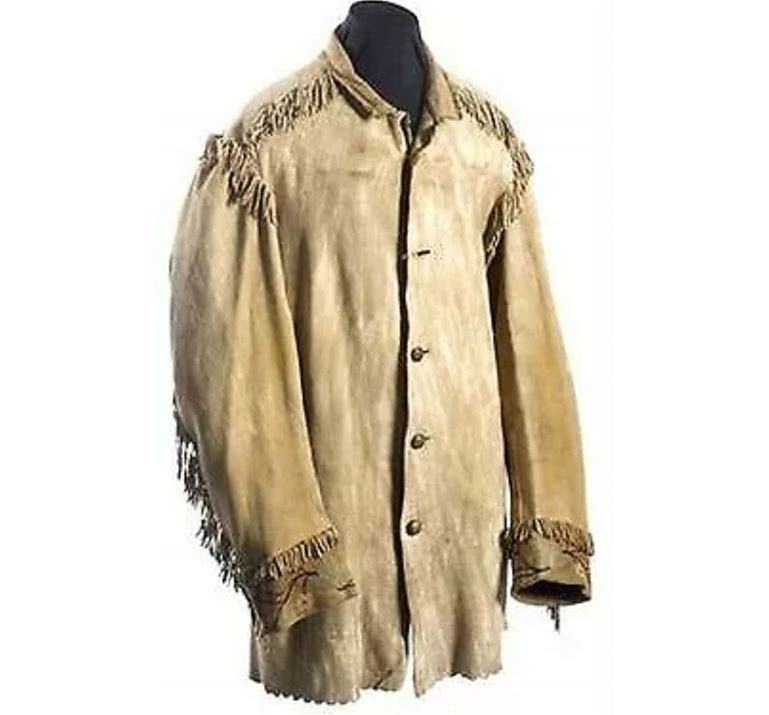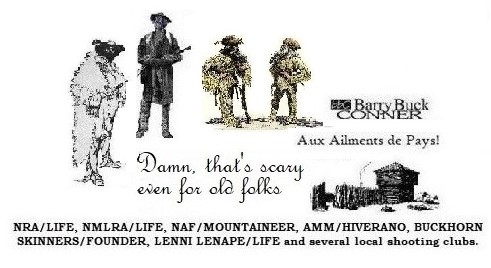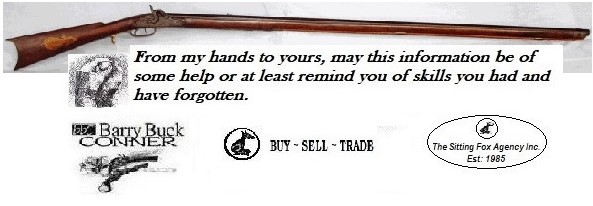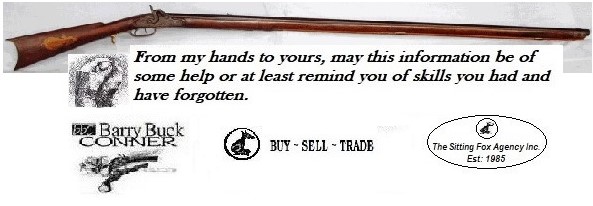Making My Life Simpler ...
5 posters
Page 1 of 1
 Making My Life Simpler ...
Making My Life Simpler ...
SUBJECT: Making My Life Simpler ...
I have had several bad experiences on Facebook, ebay and PayPal lately.
It all started with the purchase of a new leather coat (never checked to see where this coat was coming from (my fault) foreign country ). The coat arrives, very nice coat just not what was shown in thew ad (difference than picture). I follow PayPal/eBay's instructions and get no where with the seller. He'll take it back and claims he'll refund the shipping, that's what his ad also claims.
The problem is: The shipping cost is more than what the coat cost. The seller has a special rate for shipping from his location. US $29.99 Standard Shipping from outside US. See details for shipping International shipment of items may be subject to customs processing and additional charges.
He's located in Sialkot, Pakistan. The shipping cost (cheapest from three different firms) was $112.17. That's more than what the coat cost.
After a dozen emails back and forth between me, the seller, eBay and PayPal. PayPal and eBay closed the case. SCREWED ...
.
I have had several bad experiences on Facebook, ebay and PayPal lately.
It all started with the purchase of a new leather coat (never checked to see where this coat was coming from (my fault) foreign country ). The coat arrives, very nice coat just not what was shown in thew ad (difference than picture). I follow PayPal/eBay's instructions and get no where with the seller. He'll take it back and claims he'll refund the shipping, that's what his ad also claims.
The problem is: The shipping cost is more than what the coat cost. The seller has a special rate for shipping from his location. US $29.99 Standard Shipping from outside US. See details for shipping International shipment of items may be subject to customs processing and additional charges.
He's located in Sialkot, Pakistan. The shipping cost (cheapest from three different firms) was $112.17. That's more than what the coat cost.
After a dozen emails back and forth between me, the seller, eBay and PayPal. PayPal and eBay closed the case. SCREWED ...
.
 Re: Making My Life Simpler ...
Re: Making My Life Simpler ...
Which is why I don't use PayPal, and it has been almost 20 years since I bought anything on Ebay. They screwed me also, I forget how, but I'm not getting bit again!
Winter Hawk- Posts : 279
Join date : 2021-06-30
Location : SE Ohio, formerly SE Alaska
 Re: Making My Life Simpler ...
Re: Making My Life Simpler ...
That crap that comes from India can be some real crap. It never looks the way its advertised.
Mustang65 likes this post
 Re: Making My Life Simpler ...
Re: Making My Life Simpler ...
This coat could be corrected if you want to spend hours to make it look better.
1. fringe needs to be twisted like shown in picture
2. black lacing needs to be removed, or replaced on sleeves.
3. probably remove shinny liner inside coat.
4. put some wear on the body of the coat.
But it's still machine sewn, sewing machines weren't widely used until 1820, could fit the later time period of the fur trade, but questionable and would have been worn by one of wealth.
~~~~~~~~~~~~~~~~~~~~
The first sewing machines, was invented by an English man Thomas Saint in 1790, in the trades as early as 1815, the sewing machine which we all agree has greatly improved the efficiency and productivity of the clothing industry.~~~~~~~~~~~~~~~~~~~~
.
 Re: Making My Life Simpler ...
Re: Making My Life Simpler ...
One of you will say these machines came out later, but first read this I put together on the machine.
SEWING MACHINES
1755
A German immigrant in England by the name of Charles Fredrick Wiesenthal is working as an engineer.
He is awarded a patent for a double pointed needle with an eye at one end, with the intention that it will aid sewing. There is no mention of a machine to accompany this device.
1790
Thomas Saint designs a machine for sewing leather and canvas — primarily ship sails. The machine uses an awl to make a hole in the material, allowing the needle to pass through in a chain stitch.
It’s unknown if he ever actually built the machine alongside his designs. In 1874, William Newton Wilson found the designs and built a working machine from them, with some minor adjustments to the looper mechanism.
History of the sewing machine
Newton Wilson’s prototype of Saint’s design (By Panjigally: CC BY-SA 4.0 licence)
1804
Englishmen Thomas Stone and James Henderson create a machine that intends to imitate traditional sewing by hand.
The same year, in Scotland, John Duncan creates an embroidery machine that uses multiple needle.
1810
Balthasar Krems, a German, creates a sewing machine for sewing caps. He is not issued any patents and the machine is considered defective.
1814
Josef Madersperger, a Viennese tailor, presents his first sewing machine. He attempts to combine the elements of the sewing machine prototypes that went before him, but ultimately fails to deliver a practical working machine.
1829
Barthélemy Thimonnier develops the first working and popular sewing machine in France, which uses chain stitches to create straight seams. It uses a hooked needle and the machine itself is wooden.
He is issued a patent for his design in 1830 and opens a clothing manufacturing company the same year, that makes uniforms for the French army.
Unfortunately, the revolutionary aspect of the sewing machine proves to much for the locals and his factory — complete with 80 of his sewing machines — is burned down within a decade of its opening.
Who invented the sewing machine
Seamstresses in 1904, when sewing machines had been more widely accepted.
1832
American inventor Walter Hunt creates the first lock stitch sewing machine that produces short and straight seams.
It uses an eye pointed needle to carry the upper thread and a falling shuttle to carry the lower.
He grew frustrated with the project and abandoned his idea in 1838, fearing the consequences for the hand sewing economy. He didn’t patent his design until 1854.
1842
John Greenough patents the US’ first sewing machine, which sees the needle pass completely through the material.
1844
Englishman John Fisher develops the first sewing machine that combines all the successful design elements presented over the last half century. Although the machine was originally intended to sew just lace, Fisher spotted its potential as a general sewing machine.
Unfortunately, Fisher has missed out on a lot of the recognition due to him for his part in the development of the sewing machine, as he unfortunately doesn’t file his patent correctly.
1845
Elias Howe creates a sewing machine that differs from Fisher’s in that the fabric is held vertically and — most importantly — includes an eye pointed needle. It’s also hand cranked.
Old sewing machines
Howe’s lockstitch machine
Howe took a long time to find success with his sewing machine, even moving to England to try and find a market for it. When he returned to the US to be by his dying wife’s bedside, he found that sewing machines had finally hit their stride in his homeland and that a number of manufacturers were using his patent designs to sell their wares.
He managed to successfully sue many of them, including the famous Isaac Merritt Singer, for patent infringement and future royalties.
1851
Isaac Merritt Singer creates his first sewing machine which combines Howe’s eye pointed needle (for which he would later have to pay him royalties for) with a falling shuttle and a fixed arm to hold the needle.
1850s
The sewing machine industry really began to heat up in the 50s as the Wheeler & Wilson Company created a machine that worked much quieter and smoother than their competitors, as well as inventing the four motion feed mechanism that is still in use in machines today.
Antique sewing machine
A Wheeler & Wilson sewing machine (by Panjigally: CC BY-SA 3.0 licence)
Charles Miller also created a machine to sew buttonholes during this time.
The number of patents being issued for sewing machines in the 50s reached a point where inventors were suing each other left, right and center for various infringement claims. This lead to a patent thicket commonly termed the ‘Sewing Machine War’.
1856
The Sewing Machine War came to a close when the major players decided to join together to protect their monopoly with the Sewing Machine Combination.
The group included Singer, Howe, Wilson & Wheeler and Grover & Baker.
They pooled their patents until the last one expired in 1877.
1857
Another US inventor, James Edward Allen Gibbs, patented the first chain stitch single thread sewing machine.
1860s
This was the era finally when sewing machines came into vogue. Clothing manufacturers snapped them up as they strove for efficiency and economy, while they made their way into the homes of housewives.
1877
Joseph M Merrow created the first production overlock sewing machine, commonly referred to as the first crochet machine.
1885
Singer patents the Singer Vibrating Shuttle sewing machine, which were incredibly popular before being overtaken by rotary shuttle machines in the 20th century.
The vibrating shuttle came from Allen B Wilson who developed the idea for enhanced lock stitches.
1889
Singer introduces the first electric sewing machines to the world, which would go on to become highly sought-after antique machines in the century to follow.
1918
Singer becomes the first man to be spending over $1 million a year on advertising.
At this point, he’s selling hand, treadle and electric machines.
The sewing machine probably saw use on clothes worn by those of wealth, not the average mountaineer. That said at the end of the fur trade clothing showed up on traders blanket that were commercially made (sewn). Probably very costly when compared to the hand sewn one (remember labor was cheap back in the day).
SEWING MACHINES
1755
A German immigrant in England by the name of Charles Fredrick Wiesenthal is working as an engineer.
He is awarded a patent for a double pointed needle with an eye at one end, with the intention that it will aid sewing. There is no mention of a machine to accompany this device.
1790
Thomas Saint designs a machine for sewing leather and canvas — primarily ship sails. The machine uses an awl to make a hole in the material, allowing the needle to pass through in a chain stitch.
It’s unknown if he ever actually built the machine alongside his designs. In 1874, William Newton Wilson found the designs and built a working machine from them, with some minor adjustments to the looper mechanism.
History of the sewing machine
Newton Wilson’s prototype of Saint’s design (By Panjigally: CC BY-SA 4.0 licence)
1804
Englishmen Thomas Stone and James Henderson create a machine that intends to imitate traditional sewing by hand.
The same year, in Scotland, John Duncan creates an embroidery machine that uses multiple needle.
1810
Balthasar Krems, a German, creates a sewing machine for sewing caps. He is not issued any patents and the machine is considered defective.
1814
Josef Madersperger, a Viennese tailor, presents his first sewing machine. He attempts to combine the elements of the sewing machine prototypes that went before him, but ultimately fails to deliver a practical working machine.
1829
Barthélemy Thimonnier develops the first working and popular sewing machine in France, which uses chain stitches to create straight seams. It uses a hooked needle and the machine itself is wooden.
He is issued a patent for his design in 1830 and opens a clothing manufacturing company the same year, that makes uniforms for the French army.
Unfortunately, the revolutionary aspect of the sewing machine proves to much for the locals and his factory — complete with 80 of his sewing machines — is burned down within a decade of its opening.
Who invented the sewing machine
Seamstresses in 1904, when sewing machines had been more widely accepted.
1832
American inventor Walter Hunt creates the first lock stitch sewing machine that produces short and straight seams.
It uses an eye pointed needle to carry the upper thread and a falling shuttle to carry the lower.
He grew frustrated with the project and abandoned his idea in 1838, fearing the consequences for the hand sewing economy. He didn’t patent his design until 1854.
1842
John Greenough patents the US’ first sewing machine, which sees the needle pass completely through the material.
1844
Englishman John Fisher develops the first sewing machine that combines all the successful design elements presented over the last half century. Although the machine was originally intended to sew just lace, Fisher spotted its potential as a general sewing machine.
Unfortunately, Fisher has missed out on a lot of the recognition due to him for his part in the development of the sewing machine, as he unfortunately doesn’t file his patent correctly.
1845
Elias Howe creates a sewing machine that differs from Fisher’s in that the fabric is held vertically and — most importantly — includes an eye pointed needle. It’s also hand cranked.
Old sewing machines
Howe’s lockstitch machine
Howe took a long time to find success with his sewing machine, even moving to England to try and find a market for it. When he returned to the US to be by his dying wife’s bedside, he found that sewing machines had finally hit their stride in his homeland and that a number of manufacturers were using his patent designs to sell their wares.
He managed to successfully sue many of them, including the famous Isaac Merritt Singer, for patent infringement and future royalties.
1851
Isaac Merritt Singer creates his first sewing machine which combines Howe’s eye pointed needle (for which he would later have to pay him royalties for) with a falling shuttle and a fixed arm to hold the needle.
1850s
The sewing machine industry really began to heat up in the 50s as the Wheeler & Wilson Company created a machine that worked much quieter and smoother than their competitors, as well as inventing the four motion feed mechanism that is still in use in machines today.
Antique sewing machine
A Wheeler & Wilson sewing machine (by Panjigally: CC BY-SA 3.0 licence)
Charles Miller also created a machine to sew buttonholes during this time.
The number of patents being issued for sewing machines in the 50s reached a point where inventors were suing each other left, right and center for various infringement claims. This lead to a patent thicket commonly termed the ‘Sewing Machine War’.
1856
The Sewing Machine War came to a close when the major players decided to join together to protect their monopoly with the Sewing Machine Combination.
The group included Singer, Howe, Wilson & Wheeler and Grover & Baker.
They pooled their patents until the last one expired in 1877.
1857
Another US inventor, James Edward Allen Gibbs, patented the first chain stitch single thread sewing machine.
1860s
This was the era finally when sewing machines came into vogue. Clothing manufacturers snapped them up as they strove for efficiency and economy, while they made their way into the homes of housewives.
1877
Joseph M Merrow created the first production overlock sewing machine, commonly referred to as the first crochet machine.
1885
Singer patents the Singer Vibrating Shuttle sewing machine, which were incredibly popular before being overtaken by rotary shuttle machines in the 20th century.
The vibrating shuttle came from Allen B Wilson who developed the idea for enhanced lock stitches.
1889
Singer introduces the first electric sewing machines to the world, which would go on to become highly sought-after antique machines in the century to follow.
1918
Singer becomes the first man to be spending over $1 million a year on advertising.
At this point, he’s selling hand, treadle and electric machines.
~~~~~~~~~~~~~~~~~~~~~~~~~~~~
The sewing machine probably saw use on clothes worn by those of wealth, not the average mountaineer. That said at the end of the fur trade clothing showed up on traders blanket that were commercially made (sewn). Probably very costly when compared to the hand sewn one (remember labor was cheap back in the day).
 Re: Making My Life Simpler ...
Re: Making My Life Simpler ...
The first tip it was either foreign or fake would be the price. Buckskin, Elk skin, goat skin, for a coat like that will never be sold for under $100. Be lucky to get for under $200.
Buck Conner likes this post
 Re: Making My Life Simpler ...
Re: Making My Life Simpler ...
Last edited by Buck Conner on 6/11/2023, 10:36 am; edited 1 time in total
Mustang65 likes this post
 Re: Making My Life Simpler ...
Re: Making My Life Simpler ...
gotta stay away from the pakistan stuff buck. My buddy got burned despite me warning him. He wore it once and the sleeve ripped off lol. I think they soak them in too much chemical and weaken the weather to where it just pulls apart.
He also had to send back the first one because it looked nothing like in the pictures.
He also had to send back the first one because it looked nothing like in the pictures.
Buck Conner and uffda like this post
 Re: Making My Life Simpler ...
Re: Making My Life Simpler ...
Jonathan, I believe you are 110% correct. That shirt pictured looks like he was dragged behind a horse for a couple of miles. LOL
Buck Conner and uffda like this post
 Re: Making My Life Simpler ...
Re: Making My Life Simpler ...
Too good to be true. Heck we have all been burned. However, once in a while we get lucky. Naaaa. Good lesson though to consider in future.
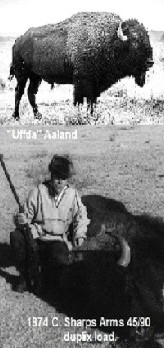
uffda- Posts : 161
Join date : 2021-07-15
Buck Conner and Mustang65 like this post
Mustang65 likes this post
 Similar topics
Similar topics» Making shooting fun.....
» Making Char cloth
» Making my first powder horn
» [b]MAKING FLAT HORNS[/b]
» The life of a fur trapper
» Making Char cloth
» Making my first powder horn
» [b]MAKING FLAT HORNS[/b]
» The life of a fur trapper
Page 1 of 1
Permissions in this forum:
You cannot reply to topics in this forum






